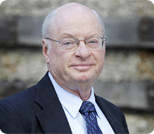Helicopter money: dropping money from the sky?
In the past few years, most major central banks have failed to achieve the higher rates of inflation they claim to want. They tried both “quantitative easing” and “zero-interest-rate policies” with no success. Now there are press reports that in Europe and Japan they are considering “helicopter money.”
It is not as easy to give away free money as one might expect–especially if it is the central bank that wants to get cash into the hands of the public. Here, what I mean by “cash” is the actual currency issued by a central bank; below I will address the issue of cash in the sense of bank deposits that can be spent with debit cards or checks. The liabilities on the balance sheets of central banks, namely the reserve balances of commercial banks and the (mostly) paper currency people carry around in their purses and wallets, are too large. In the case of the US currency–dollars–there is about $1.4 trillion of it being held by someone on the planet. By most estimates, over one half the total is held by households and businesses outside the US.
Central banks are unique creatures in that more liabilities are created by acquiring more assets. That is, normally they buy securities from banks and credit the reserve account of the bank– the bank then makes loans or buys different securities in the market and credit the account of the borrower or seller of the security. The end result is that the central bank has more assets and liabilities, and businesses and households that borrow from banks or sell securities to banks have more “money:” bank deposits or currency.
In some countries, and in a few instances in the US, central banks lend directly to the government or buy newly issued bonds directly from the government so that government can spend money without having to sell bonds to the public. Indeed, that is what is meant by ‘helicopter money.’ Central bank liabilities–money–increase without an “open market purchase” of securities by the central bank. Magic! The US central bank did this a couple times over four decades ago–with Congressional approval–when the official price of the US stock of gold in Fort Knox was reset. At the end of 1971, the price of gold was changed from $35/ounce to $38/ounce; two years later the price was reset again to $42.22. On both occasions the asset value of the “gold certificates” held by the Federal Reserve Banks increased by $1.2 billion, so liabilities had to also increase by the same amount. The US Treasury “General Account” at the Federal Reserve Banks was credited with the amount of the increase in the value of the US gold holdings, so the Treasury could spend that amount without having to collect taxes or sell bonds.
That is helicopter money.
Suppose, however, that the central bank wants to get more currency directly into the hands of the public without first giving it to the Treasury to spend as it wishes. The classroom expression “helicopter money” conjures a vision of the central bank chartering aircraft to hover over cities, towns and villages and pushing out bales of currency to float down and be scooped up by the residents. Reality, however, is different; balance sheets have to balance, so if the currency liabilities of the central bank are going to be increased, the assets must also increase. In the classroom one might imagine the central bank selling lottery tickets to the public that are expected to have a net positive-sum payout. That is, sell $1 billion of lottery tickets where the total payout is going to be $1.1 billion. The central bank would have as an asset the redeemed lottery tickets, and everyone who turns in a $100 lottery ticket to the central would get $110 in new currency to spend. Even I would buy one of those lottery tickets!
More realistic ways of getting additional currency directly into the hands of the public might be imagined, but most likely what is currently being discussed by monetary authorities in Europe and Japan will involve the government–the central banks might make a zero-interest loan to the Ministry of Finance or other government agency which will then spend as usual without having to tax or sell securities. Imagine that the “tax rebates” issued by former Presidents Ford (1975) and Bush (2008) had not been financed by the issuance of bonds to the public, but had been made possible by an “interest free” loan from the Federal Reserve to the US Treasury. That would have been helicopter money. Fortunately, the US system of government would not allow for that without first enabling legislation from the US Congress.
Today, the traditional tools of monetary policy are broken. Open market Operations to expand or contract the central bank’s balance sheet in an attempt to control the growth path of the nation’s money supply no longer work. Trying to manipulate the over-night interbank rate in order to influence other market-determined interest rates stopped working more than five years ago. The “textbook” tools of changing reserve requirements and raising or lowering the interest central banks charge on loans to commercial banks stopped being a factor when quantitative easing flooded the banking system with massive excess reserve balances. Now, consideration of the once heretical idea of “dropping money from helicopters” is an admission that the traditional tools of monetary policy are no longer working, and the monetary authorities are becoming desperate in their pursuit of higher inflation.









